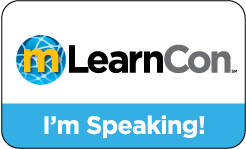On our weekly twitter learning fest, #lrnchat, I regularly identify myself as a learning experience design strategist. I don’t always assume people know what that means, but for that audience I figure they can infer what it means. However, I think the idea is worth exploring, because increasingly I think that not only is that what I do, but it also is important.
First, I think it is important to stop thinking about content, and start thinking about learning experience. It’s too easy, when focusing on content, to focus on knowledge, not skills, yet skills are what will make the difference – the ability to do. Also, it helps focus on the conative side of learning, the motivation for and anxiety about learning when you think about the learner experience. And, as always, I take a broad interpretation of learning, so this holds true beyond formal learning; it applies to thinking about performer experience when you consider the tools they’ll have, and even the way that access to communities and other informal learning components will be made available in situ.
When you think about creating learning experiences, you are talking about design. How do you create effective and engaging learning experiences? You need a design process, tools, and good concepts around learning and engagement. Really, both my book on designing engaging learning experiences, and my forthcoming one on mobile learning, are at core about design. And there are levels of design, from individual experiences to the architecture and infrastructure that can support the rich suite of experiences that characterize an organization’s full needs.
Which takes us to the last part, strategy. By and large, I don’t do the design anymore, since I can add more value at a higher level. Increasingly, what I’m doing is helping organizations look at their needs, current state, teams, processes, and more, and helping them develop a strategic approach to delivering learning experiences. I help design pedagogies, processes, templates, and short-, medium-, and long-term steps. And it is in this way that I accomplish what my first real client told me I did for them, I helped them take their solutions to the ‘next level’.
I think learning experience design is important, so important that I want to not just execute against a project at a time, but find ways to develop capability so a lot more good learning experience is created. That means working with groups and systems. More organizations need this than might be imagined: I’ve done this for for-profit education, education publishing, those servicing corporate learning needs, and of course organizations (governmental and corporate) wanting their external or internal learning solutions to be effective and engaging. The sad fact is, too much ‘learning design’ is content design, still. I’m always looking for ways to help spread a better way of creating learning.
For example, I ran a ‘deeper ID’ workshop this week for a team, and presented the concepts, modeled the application to samples of their learning objectives, gave them a practice opportunity, and wrapped up, across each of the learning elements. It was a way to address learning design in a bigger way. An extension would be to then submit sample content to me to have me comment, developing their abilities over time, as I did with another client working on integrating scenarios.
There are lots of ways this plays out, not just workshops but developing content models, spreading new metaphors for mobile learning, creating pedagogy templates, and more, but I reckon it is important work, and I have the background to do it. I’ve found it hard to describe in the past, and I do question whether the ‘learning’ label is somewhat limiting, given my engagement in social learning with ITA and more, but I reckon it’s the right way to think about it. So I’ll keep describing it this way, and doing this work, until someone gives me a better idea!
